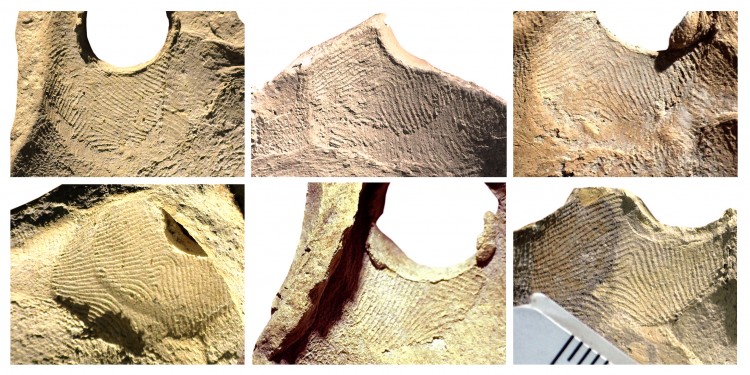
On the trail of antique potters
Fingermarks on oil lamps and terracotta objects have now shown researchers for the first time how potters worked in a ceramics workshop in late antiquity around 1,700 years ago. Prof. Achim Lichtenberger, the Director of the Institute of Classical Archaeology and Christian Archaeology at the University of Münster studied fingerprints on the insides of waste clay material in Beit Nattif, in what is today Israel. Lichtenberger worked on the study together with the American forensic anthropologist Prof. Kimberlee S. Moran from Rutgers University-Camden. The study has been published in the latest issue of the English-language journal "Antiquity".
To manufacture their products, the potters pressed clay into moulds and, in the process, plastic fingerprints were repeatedly preserved in the clay. Lichtenberger and his colleague recognized identical prints on a variety of objects, thereby discovering that one person produced both oil lamps and terracotta figurines. Up to now, this could not be proven with this degree of clarity. Also, the fingermarks were often to be found on a specific spot on the lamp or the terracotta object, showing clearly the hand movements which the craftsman made. "Quite clearly, he always spread the clay into the form in the same way," Lichtenberger explains. "We can see from this that the craftsmen had a well-established routine." Evidently, one of the workers even developed a new type of oil lamp with a characteristic design by combining two existing types. "This type is very rare. There is only one specimen of this kind that we know of, and the work shows an attempt to further develop forms – which sometimes also led nowhere," the Münster archaeologist adds.
The two researchers looked at around 700 objects which had been found in two cisterns at the beginning of the 20th century. The material originated in a workshop which was probably in operation around 300 CE. What was special about the study was not only the unique opportunity to examine objects which had been produced in a short period of time by a smallish number of workers. The interdisciplinary collaboration between archaeology and forensics also made it possible for a comprehensive examination to be undertaken. While Lichtenberger classified and interpreted the fragments, his colleague from forensics analysed and photographed the objects using directed oblique lighting, thereby determining the characteristic profile of the fingerprints which had been preserved on the surface of the clay during the firing process.
In a second stage of the investigation, beginning in the spring, special software is due to be used to carry out computer-based analyses of the fingermarks. In 2016 Achim Lichenberger already published a book on the workshop in Beit Nattif. Among the things he determined at that time were the typology and the style of the terracotta objects.
Original publication:
Achim Lichtenberger and Kimberlee S. Moran: Ancient fingerprints from Beit Nattif: studying Late Roman clay impressions on oil lamps and figurines; Antiquity; Volume 92, Issue 361, Published online 9 Feb 2018, DOI: 10.15184/aqy.2018.2.
